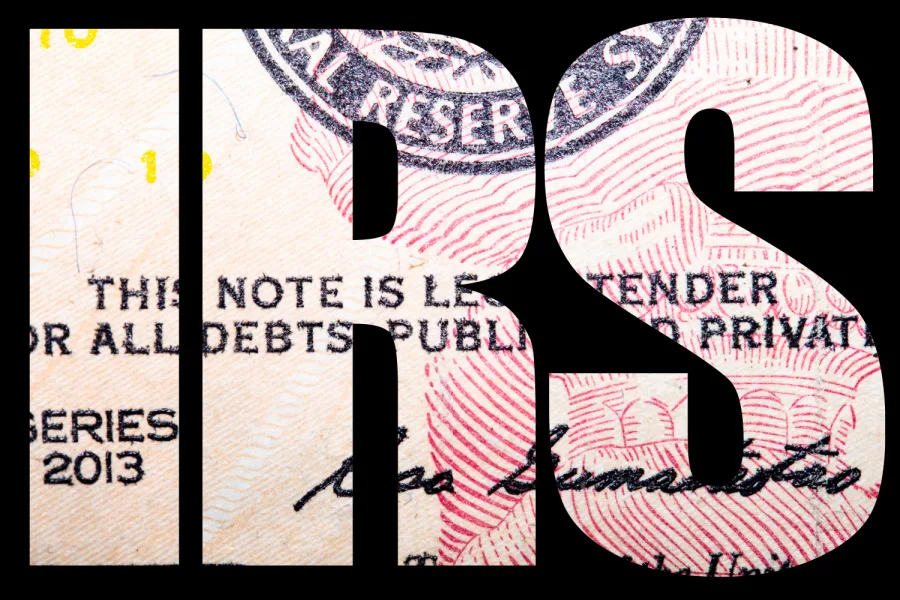If you’ve ever been in debt to the Internal Revenue Service (IRS), you know it’s a serious matter. The IRS will stop at nothing to get what you owe in income taxes. They’ll take aggressive steps to get your money, even if that means garnishing your wages or seizing your property such as your bank account. You may feel helpless and that there’s little you can do to alter the situation.
What the IRS fails to tell taxpayers indebted to them is that there is a 10-year statute of limitations. That means if the IRS hasn’t collected the debt you owe them in 10 years, the debt is wiped clean from their books.

Most taxpayers are not aware of this statute, but if they were aware, the situation could prove even more complicated for them. Given the nuances of the statute, it’s not as simple as it sounds.
In this article, I will help you understand the complexities of the statute, so you’ll be able to better handle the nuances that come with the IRS statute of limitations. Can the 10-year statute of limitations be used in your favor if you owe the IRS? Let’s find out.
When Does the 10-Year Period Start?
Under certain circumstances, the IRS will forgive tax debtors after 10 years. But your 10-year period may not be the same time period as the IRS’ 10-year period.
The reason is there may be lengthy suspensions, the IRS’s date of tax assessment versus your last return, and whether or not you have been keeping up to date with the documentation regarding your tax returns since the debt period began.
The short answer is, the 10-year period starts at the date of the tax assessment or tax bill for unpaid taxes is due. The date of the tax assessment is the date you will find on the document serving as your Notice of Deficiency, and it is the date the IRS filed the appropriate form.
It is not the date of when you sent your last tax return or made the last payment for that year. If you decide to not file your taxes because you know you cannot pay, the IRS will use existing information (i.e., previous returns and information from employers and businesses) to file an approximate substitute return in your name.
This filing will be in the simplest form, without any of the applicable deductions you would typically take advantage of. When you receive a Notice of Deficiency, or bill of your outstanding debt with the IRS, and fail to act on it, the IRS will begin its collection action.

When Does the 10-Year Period End?
For every month that your balance remains due, your debt grows through failure-to-pay penalties and a flat interest rate. The IRS will use all of its firing power against you: liens, levies on your accounts, garnishment of wages, and the seizing of property.
These tactics are used to force you into agreeing to a payment plan, without ever alerting you about the 10-year statute. You do have the option, however, to halt any collection efforts by filing as Currently Not Collectible.
That will pause any collection efforts until your income reaches a point where you can potentially begin to make debt payments.
Also, keep in mind, there are certain actions and agreements that may require signing a waiver that dictates that the IRS can extend the limitations period. When that happens, it means that the Collection Statute Expiration Date (CSED) may be further than you think.
It also means that the 10-year period may not necessarily be absolute. So, if you’re not keeping up with all the various documentation surrounding the debt, the IRS may have the upper hand on you.

What Will Cause the 10-Year Clock to Stop Ticking?
Whenever the IRS cannot currently collect any payments from you and you are in contact waiting for them to deliberate your offer for a payment plan, the 10-year timer on your tax debt is halted.
There are multiple reasons why the 10-year timer can be halted and not allowed to collect payments from you and I’ll share them here:
- When you’re filing for bankruptcy.
- When you’re filing an Offer in Compromise.
- When you’re filing appeals.
- When you’re filing a lawsuit against the IRS.
- When you’re out of the country for at least six months.
- When you’re signing a waiver to extend the Collection Statute Expiration Date (CSED).
- When you’re in the midst of military deferments.
So, knowing your 10-year period isn’t as simple as figuring out your tax assessment date and counting from there. Any of these events can halt the clock.
Proceedings in bankruptcy court alone can take up to a year, and after that, the IRS waits an additional six months after the proceedings have ended to begin their collection efforts (and, consequently, the collection timer).
Whenever the IRS cannot pursue you for your unpaid debt, it stops counting down on the time limit for your debt. Exactly how much time each of these issues adds to the clock on your CSED is different.
What Happens When the Statute of Limitations Expires?
When the statute of limitations expires, the IRS does not feel compelled to notify debtors. The onus is on you as the debtor to track the status of where you are as a taxpayer, on the statute of limitations.
It is also your responsibility to obtain documentation from the IRS that the tax debt no longer exists. Once that is confirmed, a tax professional can assist you in having the IRS issue an official Certificate of Release of Federal Tax Lien or a Lien Withdrawal.
Proof of a lien release or withdrawal is usually needed to present to institutions who determine credit-worthiness. That is the first step in repairing your credit score.

Examining Your Ability to Pay Your Tax Debt
When first getting hit with the tax assessment, the first thing you want to do is examine your ability to pay the debt. Even if you’re not able to pay the debt in full, it may be possible to discuss a payment option such as a monthly payment or other repayment plan.
If you are able to, you are well within means as a taxpayer to pay the full amount you owe. However, not all taxpayers will have this easy option.
If you find yourself in financial hardship, it’s likely you won’t be able to pay the tax debt you owe. You can contact the IRS immediately and explain the change in your ability to pay.
When the cause is reasonable, and you are unable to make monthly payments without compromising your basic living needs, the IRS will work with you to lower your payments or even put your debt into the currently not collectible status.
The best thing you can do to pay the IRS back taxes is remain in contact with them.
When your tax debt is in the currently not collectible status, the IRS will review your situation annually—and if your circumstances do not change, your debt will remain in this status until the statute of limitations expires, at which point the IRS will write off your remaining balance.
What Are My Options When in Debt to the IRS?
When in debt with the IRS, we may know that with the statute of limitations, the IRS has 10 years to collect that debt. After 10 years, the IRS can write the debt off and clear it from their books.
Many people feel tempted to wait out the 10 years to not pay the debt. However, the “waiting it out” strategy is not recommended for all tax debtors. Ten years is a long time.
And within that 10-year period, the IRS will come after you with everything they have. They will attempt liens, levies on your accounts, garnish your wages, and seize your property.
If you’re a business owner, this could impact your business. You may not be able to continue to operate your business with the standard measures enforced by the IRS to collect. You also run the risk of getting into more debt due to wage garnishments; you could lose your home.
In addition, any actions you put in place to stall the efforts will only stop the 10-year count, which will make the 10 years even longer, possibly by years.
Attempting to utilize an imminent CSED as an IRS tax debt strategy should only be considered while under the guidance of a licensed tax expert.
The best course of action when you are in debt to the IRS is to arrange to pay your tax debt in full or negotiate an installment agreement. Of course, which of these options you choose depends on the amount you owe and the specifics of your financial situation.
However, there may be several other options. You or a tax professional negotiate with the IRS to reduce total tax debt. You could also present a hardship case to the IRS, during which time, collection procedures would halt until you are able to pay.
Being in debt to the IRS does not have to mean being in continual financial distress. While waiting it out for 10 years may seem like a smart solution to the average person, hopefully, this post has provided insight on why maybe that is not such a viable solution for everyone.

